
RST Apology to Tasmanian Aboriginal people 2021.

RST Apology to Tasmanian Aboriginal people 2021.
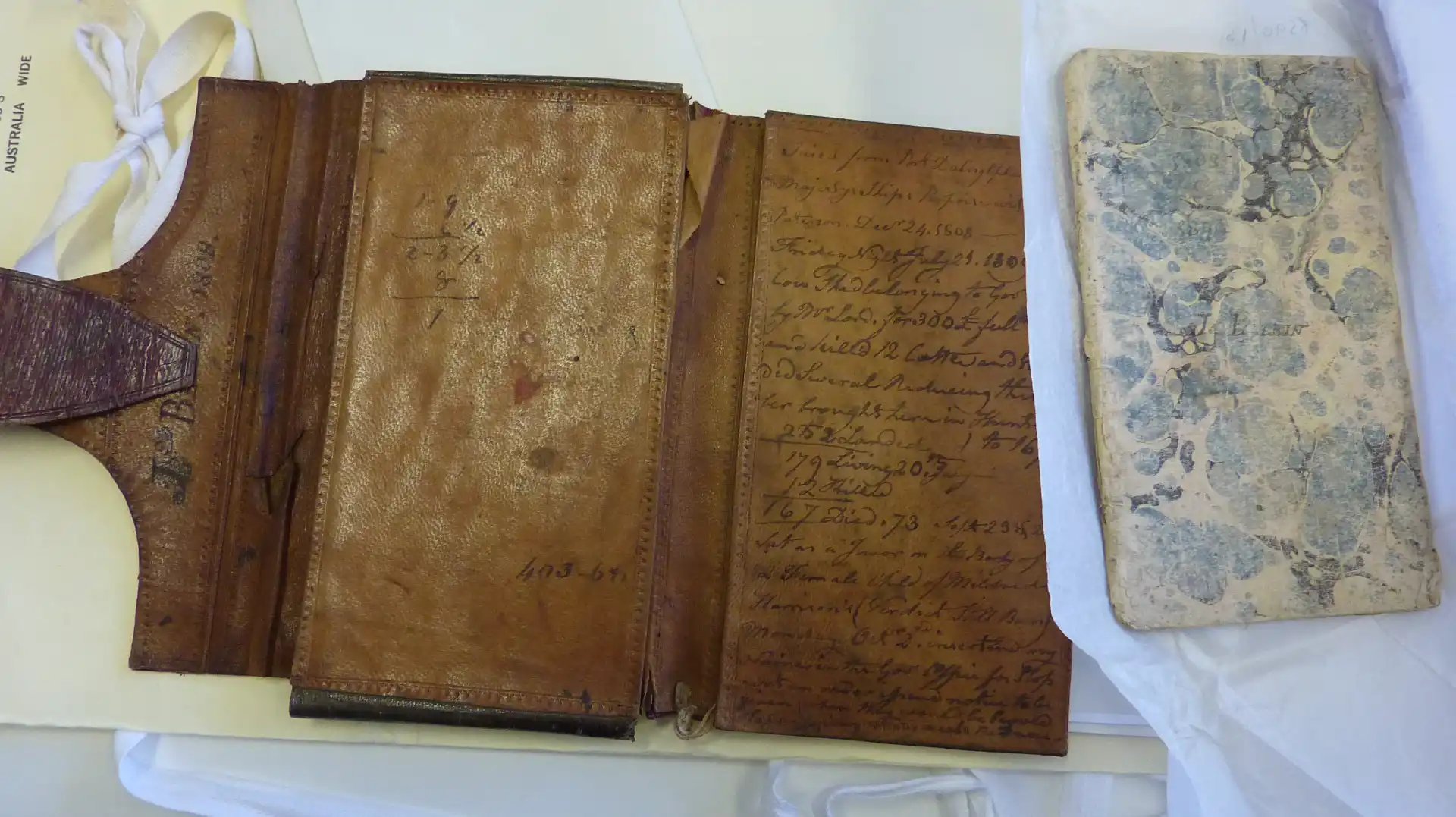
The RST Library, on long-term loan to, and stored at the University of Tasmania, is comprised of five collection categories - books, journal titles, private archival collection material, maps, and the archival records of the Society itself.
The RST book collection is comprised of 8216 books spanning the fourteenth and twentieth centuries. The strengths of the collection reflect the Society’s aim of advancing knowledge with significant works on natural history, exploration and Australian colonial history.
The RST journal collection comprises local, national and international periodicals on a range of subjects, with an emphasis on the sciences. The Society’s exchange programme with museums, universities & other societies, has resulted in 1452 journal titles in the collection, however with the advent of digital publishing, and the increasing online availability to full text journals, the number of active print journals has dramatically declined to 58 titles.
The archival collection is predominately early nineteenth century material that documents and illuminates Tasmanian colonial life. Subject matter includes Tasmanian Aboriginals, natural history, early colonial settlement, commerce and business, engineering, shipping and surveying.
This collection comprises historical records of the RST from its foundation to the present day. This collection reflects activities and development of the Society– correspondence, subject files, minutes, reports, records of events or special projects, member and committee records, accession records, historical financial records, and visitor and notes books for the Botanical Gardens.
The map collection is comprised of individual maps and maps contained within books. The collections strength lies in the maps of colonial Tasmania and the places within the island state. Learn more about the maps here.
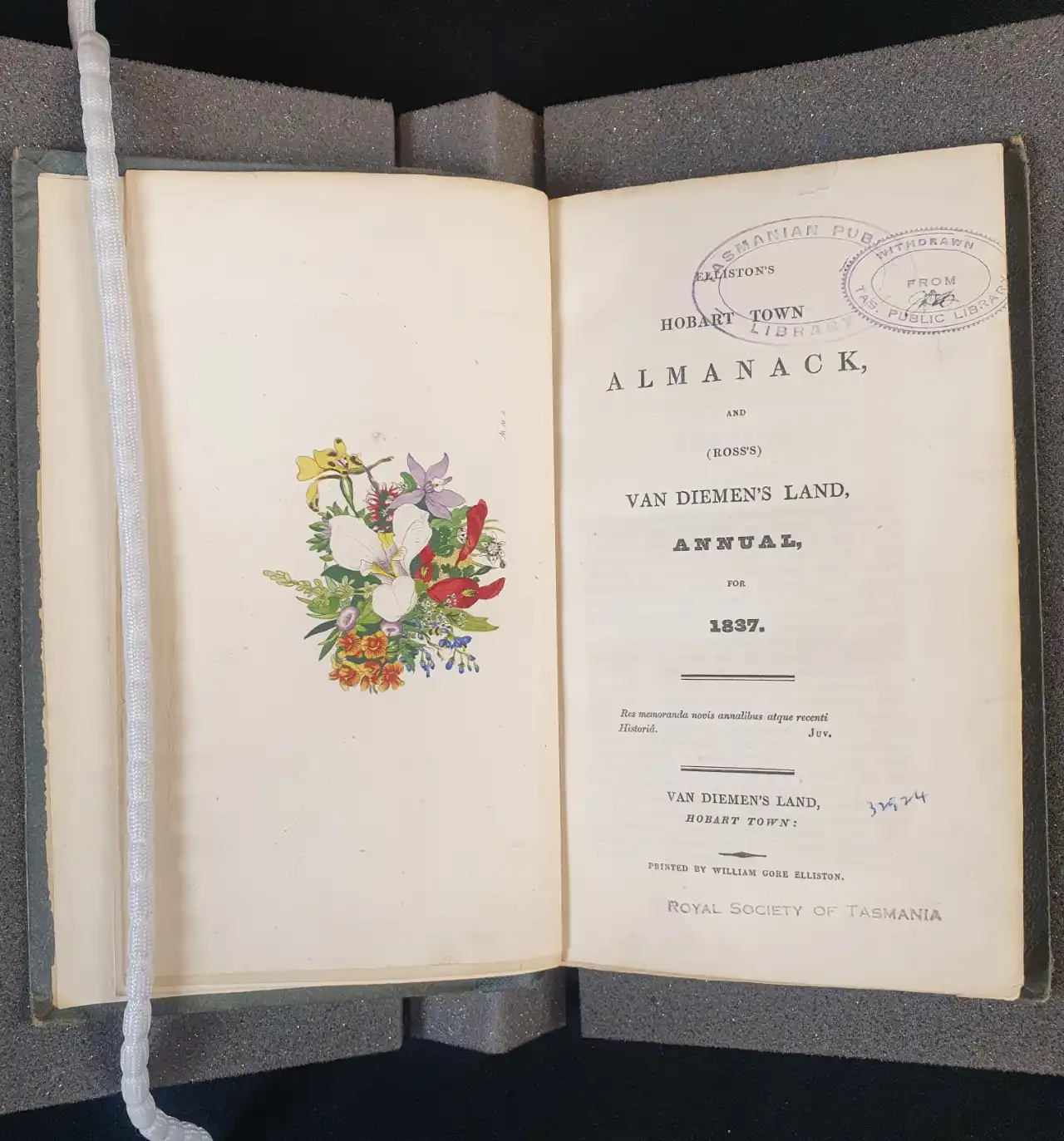
The library collections are held in the Morris Miller Library at the University of Tasmania. The Society’s library collections are open to everyone and can be accessed physically and online.
Viewing the collections in person is by appointment on Mondays and Wednesdays. Please email [email protected] to make an appointment.
Links below give online access to a range of material from the library’s collections. You can browse the library catalogue, search collection guides, and view digitised items from the collections.
The Society’s books and journal titles are available on the UTAS Library catalogue.
Collection guides for the archival collections can be found here.
Digitised material from the archives such as diaries and photographs, and the map collection can be found here.
The Northern Branch maintains a small collection of books and other documents in the QVMAG Library, curated by Librarian/Archivist Jordana Lory. Jordana can be contacted through the QVMAG or by telephone at: 03 6323 3728. Access is available to both members and the general public upon request.
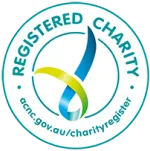
With the founding of the Society in Tasmania in 1843, as the Botanical and Horticultural Society of Van Diemen’s Land, it was agreed that a Library would be a part of the establishment process. In 1845, the Lieutenant-Governor of Van Diemen’s Land, Sir Eardley-Wilmot, wrote to the Royal Society in London, the Antiquarian Society and the Linnean Society (he being a member of each) and other societies asking for books for a library which was to be established in the cottage previously occupied by the Governor’s Secretary (and now part of the Tasmanian Museum and Art Gallery complex).
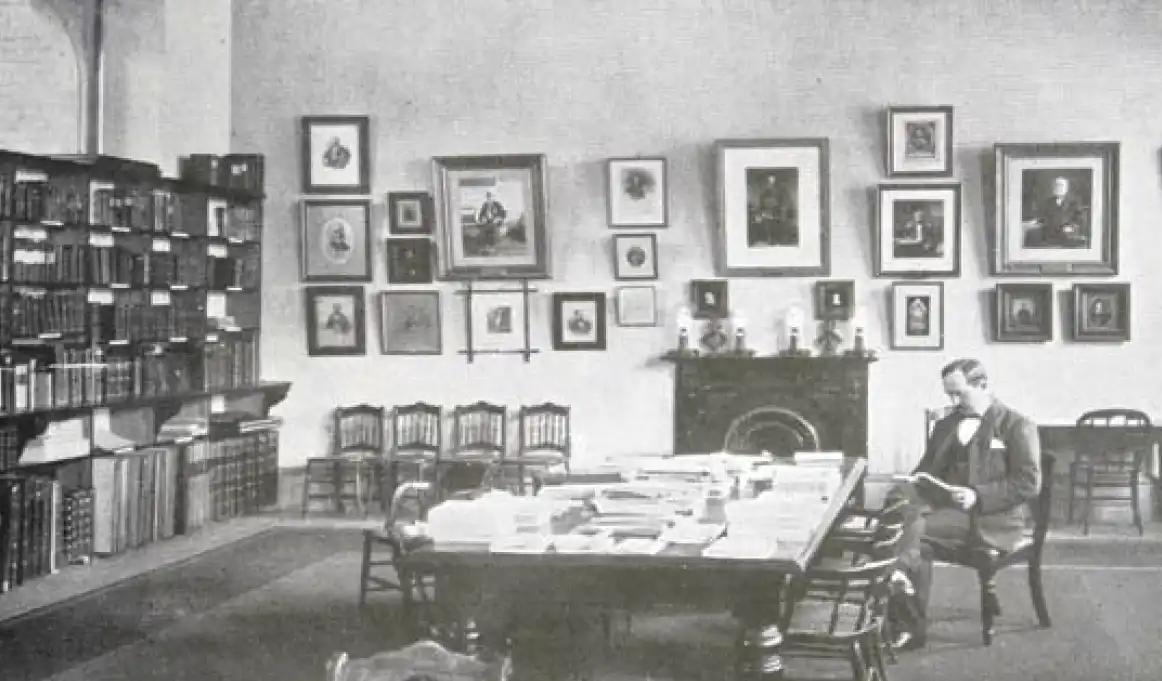
By 1849, the collection consisted of 250 volumes many of which were acquired through the donations of the members, and it was the practice of the Society to record these donations in the Annual Report together with the names of the donors. The establishment of the Tasmanian Public Library in 1849, allowed the Society to restrict its acquisition programme to materials more directly related to the objects of the Society and thereafter its collection developed around more scientific subjects.
In 1913 the Annual Report indicated that the collection had grown to about 9,000 items, and that accommodation was a serious problem. The library room lacked proper shelving and hundreds of works were distributed in other rooms of the Museum, in basements and in cupboards. Significant re-arrangement took place at this time and duplicated material was removed and placed in a designated storeroom. Additional shelving was erected and the library was able to accommodate about 12,000 volumes.
In 1968 the Royal Society of Tasmania found it necessary to seek an alternative home for its Library Collection. In March 1969, the RST voted to accept the University of Tasmania’s offer to provide accommodation for the Society’s Library Collection. The Society would, and continues to, retain ownership of the collection. The collection was transferred to the University’s Morris Miller Library, Sandy Bay campus in 1970.
An extended account of the history of the RST Library can be viewed here.
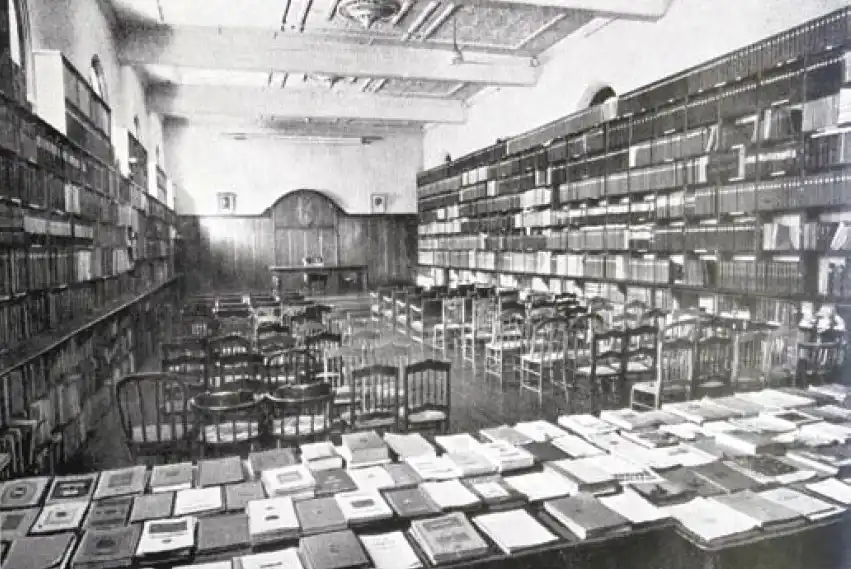
In 2015, the University of Tasmania commissioned, with financial support from the National Library of Australia, a Significance Assessment of the RST Library Collection. The Report included a Statement of Significance asserting that:
The Royal Society of Tasmania Collection, owing to the organisation’s status as the first non-British society of this nature has significance on a national, if not international scale. With some notable exceptions, the best of the books in its collection are not of great rarity – although many are scarce enough and individually valuable, and many have association value – but the collection itself could be classed as rare. It has high significance as the reflection of the work of an early colonial body of scientific enquiry, located at the very edge of the world (at least the world as it appeared to the European). Many of the members of the RST did pioneering work in the rapidly developing natural sciences in the 19th century, collecting samples for British scientists and/or maintaining regular correspondence with them on these topics, describing numerous species new to science and publishing the results of this work in the RST Papers & Proceedings. The archival record of the Society itself, and the private papers deposited into its care, provide a wealth of material for research of both a scientific and historical nature.
Many of the highlights of the library collection come from its early years of development. For instance, the Society’s Library Register records that in 1860 it purchased from Hobart bookbinder and print shop, J. Walch & Sons, a first edition of Charles Darwin’s, On the origins of species by natural selection.
![John Gould and Henry Constantine Richter Eophona personata [Japanese Grosbeak]. Hand-coloured lithograph, 10.24 x 14.78, Gould, J. 1850 The Birds of Asia.](https://rst.org.au/wp-content/uploads/John-Gould-and-Henry-Constantine-Richter-Eophona-personata-Japanese-Grosbeak.-Hand-coloured-lithograph-10.24-x-14.78-Gould-J.-1850-The-Birds-of-Asia.webp)
The collection also contains complete sets of, The Birds of Australia, The Birds of Asia and The Mammals of Australia, all published by John Gould. These works are regarded as some of the most famous and important illustrated natural history publications of the nineteenth century.
Step into 180+ years of Tasmanian discovery and culture.
Join a tradition of science, scholarship, and public engagement.
Help protect Tasmania’s heritage and inspire the next generation of thinkers.

The Royal Society of Tasmania acknowledges, with deep respect, the traditional owners of this land, and the ongoing custodianship of the Aboriginal people of Tasmania. The Society pays respect to Elders past, present and emerging. We acknowledge that Tasmanian Aboriginal Peoples have survived severe and unjust impacts resulting from invasion and dispossession of their Country. As an institution dedicated to the advancement of knowledge, the Royal Society of Tasmania recognises Aboriginal cultural knowledge and practices and seeks to respect and honour these traditions and the deep understanding they represent.

On 15 February 2021, the Royal Society of Tasmania offered a formal Apology to the Tasmanian Aboriginal people.